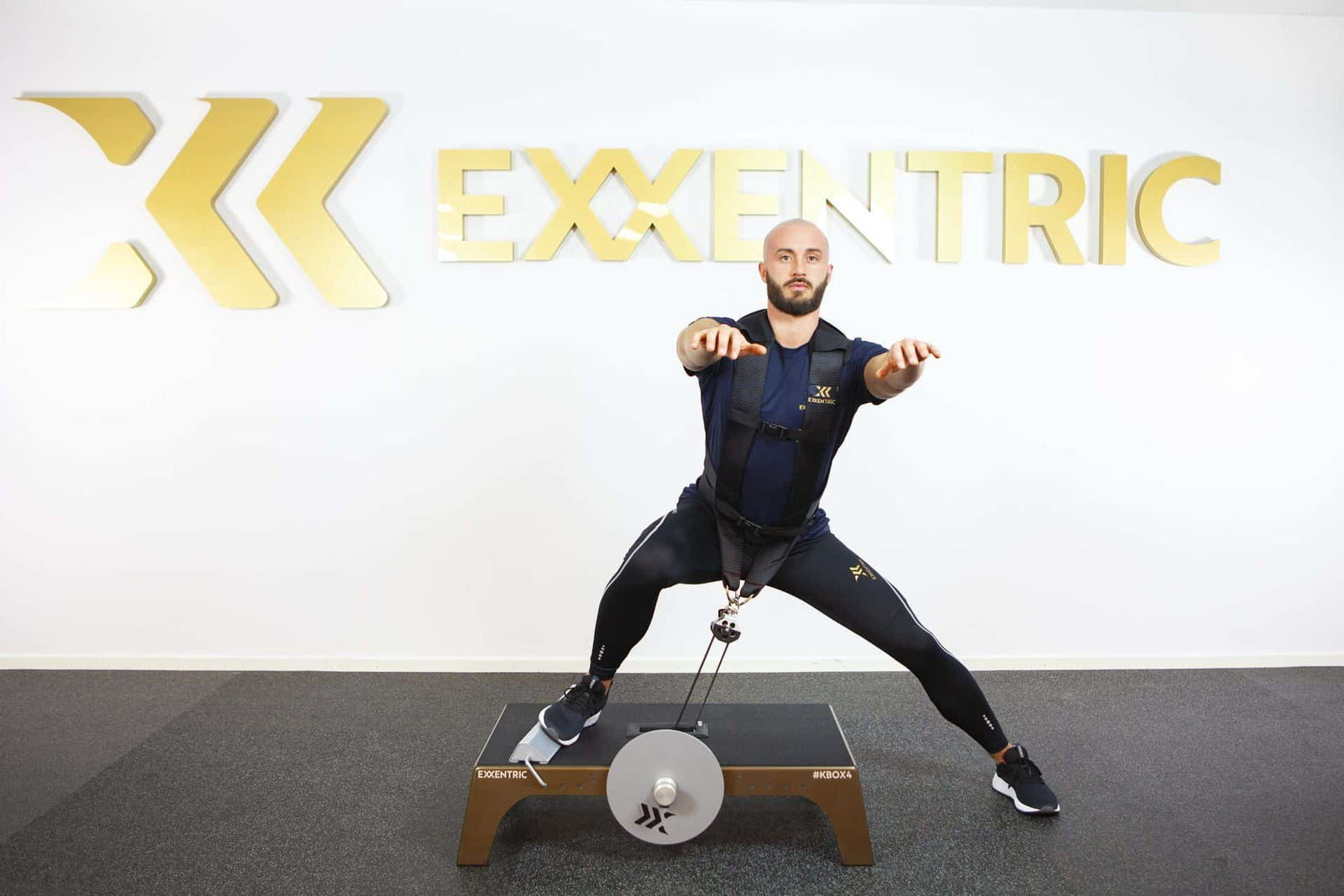Exxentric Flywheel Applications for Anterior Cruciate Ligament-Reconstruction
by Nick Gimbel, CSCS
Exxentric Flywheel Training is Iso-inertial, simply put, this means that exercises maintain a constant level of inertia throughout the range of movement (ROM) of the desired exercise. This allows for constant resistance (time under tension) and maximal force output. Performing Iso-inertial exercises on the kBox4 and kPulley2 offer many advantages for the athlete recovering from Anterior Cruciate Ligament- Reconstruction (ACL-R). Whilst targeting specific muscle groups for hypertrophy and strength that are critical for early ACL-R rehabilitation, it also recruits synergistic muscles to improve other factors such as perturbation and neuromuscular control.
Eccentric training is shown to be a safe way to effectively improve short-terms gains in strength, performance and activity levels. In fact, a study suggests that a 12 week focused eccentric training program, commencing week 3 post ACL-R, demonstrated increases in quadriceps and glute max volume and function when compared to conventional rehabilitation protocols.
Here are some of the potential applications for how Exxentric Flywheel Training can be utilized in ACL-R rehabilitation:
Squat
The squat, when performed in isolation and without changing variables such as tibial angle results in minimal or no tensile force applied to the ACL. The kBox squat is a baseline exercise for flywheel training and has multiple options to scale and vary the load accordingly. The kBox allows you to restrict depth and subsequently range of motion (ROM) for specific movements. In the recovering ACL-R athlete, this is highly beneficial, as progression of range of motion (ROM) is determined by the surgeon and their protocol depending on the autograft selection. Another key feature is to utilize the kMeter to provide real-time data on power and energy performance through the kMeter App.

Split leg Squat
The split leg squat is a great way to load the glutes, hamstrings, and quadriceps. Pairing the split leg squat with a kBox allows you to regulate depth and ROM at the knee, you can vary resistance with effort and speed of movement and lastly you can use a spotter to assist concentrically so that you may maximize the eccentric phase of the muscle action. This would be a great addition for any unilateral isolated strengthening program.

Foot Elevated Squat ACL-R
Research has shown that elevating the non-injured limb on a 5cm elevation block reduces knee extensor asymmetry in patients with ACL-R. This movement is performed as a bilateral squat on the kBox with the non-involved leg elevated whilst allowing the ACL-R leg to achieve full extension.

Lateral Squat
Lateral squats can be added to the ACL-R program once sufficient strength has been established and autograft stability has been assessed. The ability to load quadriceps, glutes and hamstrings in a functional way that promotes a return to sport is a huge advantage on the kBox. The lateral squat helps develop strength and movement patterns consistent with the change of direction.

LegExx
Further progression of ACL-R rehabilitation sees a shift from predominantly Closed Kinetic Chain (CKC) exercises into more isolated and targeted strengthening. Limited research shows that Open Kinetic Chain (OKC) exercise within a 90-0-degree arc of movement may not compromise autograft laxity. Exxentric will be releasing the flywheel version of a leg extension machine branded LegExx. The key benefits being isolated quadriceps strengthening which can be regulated by restricting ROM to a specific arc of movement to prevent excessive shear and torsion at the knee in a clinical setting. Added benefits as with all Exxentric products are the variable resistance and the eccentric overload which can be applied using the overload handle.
Conclusion
Flywheel training has many applications that include Sports Performance, General Fitness and Sports Medicine. There is strong evidence to suggest its inclusion across all applications, most notably rehabilitation. The ability to use it as a strengthening tool, with added benefits of improving balance, neuromuscular activation and synergistic muscle work is appealing on so many levels. These are exciting indicators that will ultimately lead to improved outcomes for patients who have undergone ACL-R. However, the potential to use this method of training for injury mitigation is the real gamechanger.
If you are looking to add Exxentric flywheel training to your practice, view our Exxentric product offerings here or contact us for further consultation.

